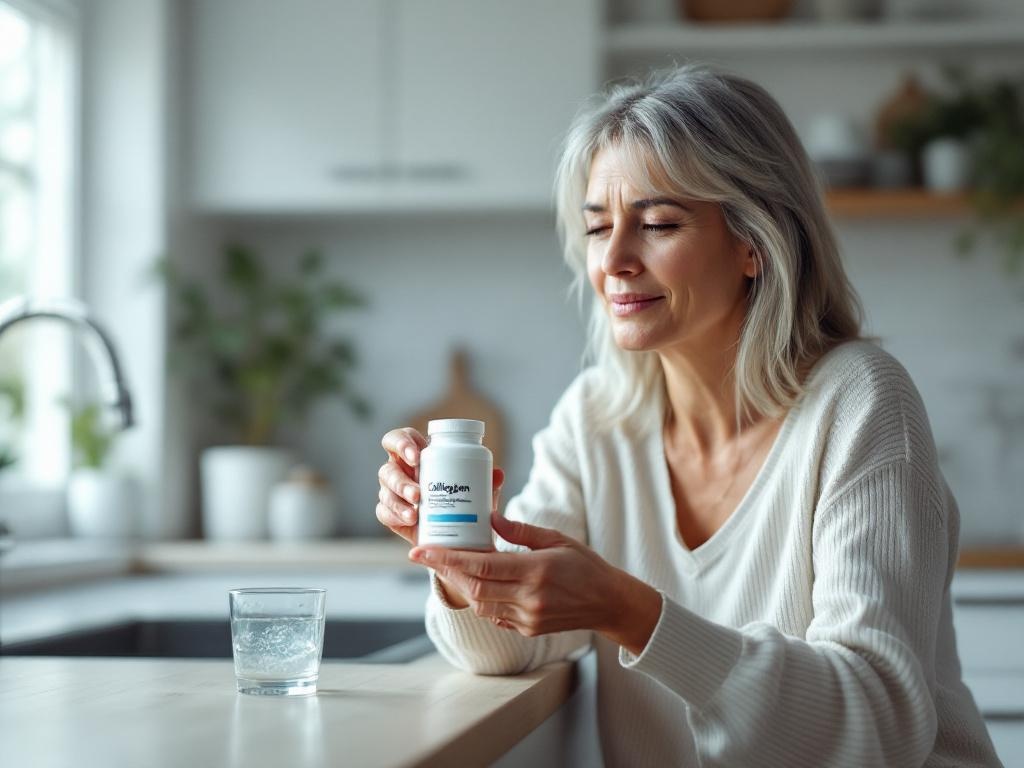
For those experiencing persistent joint discomfort, the search for effective relief often leads to a maze of supplement options, each promising transformative results. Among these, collagen supplements have gained significant attention, yet many individuals remain skeptical after investing in products that fail to deliver noticeable improvements. This skepticism is well-founded, as the collagen supplement industry faces challenges with product quality, bioavailability, and scientific substantiation.
The emergence of advanced nano-sized and hydrolyzed collagen peptides, backed by pharmaceutical-grade testing standards, represents a significant evolution in joint health supplementation. Understanding the science behind these formulations—and how molecular size, purity, and complementary approaches affect their effectiveness—can help individuals make informed decisions about joint health management.
The Science Behind Nano-Sized Collagen Peptides
Traditional collagen supplements often consist of large protein molecules that face significant absorption challenges in the digestive system. Hydrolyzed collagen peptides represent a breakthrough in addressing these limitations. Through controlled enzymatic processes, collagen proteins are broken down into smaller peptides, typically ranging between 3 and 6 kilodaltons (kDa) in molecular weight [1].
Research published in The Journal of Nutrition demonstrated that substantial portions of enterally applied gelatin hydrolysate may be absorbed within the first 12 hours [2]. This absorption rate stands in contrast to larger collagen molecules that may pass through the digestive system largely unutilized.
The significance of nano collagen peptides extends beyond simple absorption rates. A 2019 study in Nutrients indicated that enzymatic hydrolysis may increase the absorption rate and bioavailability of collagen-rich amino acids including glycine, proline and hydroxyproline [3]. These amino acids serve as essential building blocks for cartilage regeneration and joint tissue repair.
Emerging research also reveals how molecular hydrogen may complement collagen supplementation. Studies suggest that H₂ may help protect existing cartilage from oxidative breakdown while supporting the cellular energy production necessary for optimal collagen synthesis [4].
Bioavailability Factors: What Actually Reaches Joint Tissues
One of the most persistent questions surrounding collagen peptide absorption concerns whether ingested collagen actually reaches target joint tissues. Research has provided evidence addressing this concern.
Studies have found that accumulation of gelatin hydrolysate may be observed in cartilage, with measured radioactivity potentially higher following gelatin administration compared to control groups [2]. This finding addresses skepticism about whether oral collagen supplements can benefit joint health.
Recent pharmacokinetic research published in 2024 revealed that portions of hydroxyproline (a key collagen component) may remain in peptide-bound form in circulation, suggesting that collagen hydrolysates may be digested and absorbed both as free amino acids and peptide-bound forms [5]. This dual absorption mechanism may enhance the bioavailability of hydrolyzed collagen for osteoarthritis management.
The particle size of collagen peptides appears to play a role in determining absorption efficiency. More thoroughly hydrolyzed, nano-sized peptides may demonstrate improved absorption rates compared to standard collagen supplements [3]. This enhanced bioavailability may translate to more effective delivery of beneficial compounds to joint tissues.
Clinical Evidence for Joint Health Benefits
Multiple clinical trials have investigated the effects of collagen peptides for arthritis and related joint conditions. A comprehensive meta-analysis published in the Journal of Orthopaedic Surgery & Research found that oral collagen administration may relieve OA symptoms, with findings suggesting improvements in both functional and pain scores [6].
The mechanisms behind these potential benefits extend beyond simple structural support. Research has identified multiple pathways through which collagen peptides may support joint health, including potential anti-inflammatory and antioxidant capacities, and possible stimulation of collagen synthesis and bone formation [7].
A systematic review published in 2025 found that several articles evaluating the effects of collagen supplementation on joint health reported beneficial outcomes, which may include reductions in joint pain, improvements in clinical parameters, increased physical mobility, and enhanced ankle function [8]. These benefits appeared particularly relevant in high-risk groups, such as elderly adults and individuals with pre-existing joint disorders.
The Lourdes Hydrofix Premium Edition from Holy Hydrogen offers molecular hydrogen therapy that may provide additional support for joint health. Research suggests that H₂ may help support the gene expressions of aggrecan and type II collagen while potentially down-regulating enzymes responsible for cartilage breakdown [4].
The Role of Oxidative Stress in Collagen Degradation
Understanding how oxidative stress affects natural collagen production provides crucial context for comprehensive joint health management. Research published in Experimental and Therapeutic Medicine suggests that oxidative stress may be involved in the degradation of type II collagen in articular cartilage, potentially contributing to the development of OA [9].
This oxidative damage may create a cycle of inflammation and tissue breakdown that could accelerate joint deterioration. The body’s natural collagen production may become compromised, potentially leading to progressive loss of cartilage cushioning and joint flexibility.
Animal model studies have suggested that hydrogen-rich water may help suppress oxidative damage, which could aid in the inhibition of ECM-degrading enzymes and the upregulation of Col II and aggrecan expression [10]. This protective effect suggests that combining collagen supplementation with oxidative stress management may offer complementary benefits for joint health.
Recent research has explored the potential link between H₂ and ECM deposition, with molecular hydrogen treatment potentially promoting early deposition of various collagen types essential for tissue repair [11]. This finding highlights the potential for integrated approaches that address both collagen replacement and the underlying oxidative stress that may damage joint tissues.
Identifying Pharmaceutical-Grade Collagen Supplements
The lack of regulation in the collagen supplement industry presents significant challenges for consumers seeking effective products. A 2024 study in Marine Drugs emphasized that due to widespread use and lack of regulation, appropriate quality control is important to help ensure efficacy and safety [12].
Pharmaceutical grade collagen supplements should meet specific criteria for purity, potency, and safety. NSF International, a leading third-party testing organization, conducts comprehensive evaluations including label claim review, toxicology review, and contaminant review to help ensure products contain no undeclared ingredients or unacceptable levels of contaminants [13].
When evaluating best collagen supplements for joints, consumers should look for:
- Third-party testing certifications from recognized organizations
- Clear labeling of molecular weight and peptide size
- Documentation of bioavailability studies
- Transparency about sourcing and processing methods
- Evidence of batch testing for contaminants
Research has found that while collagen content in some supplements tested may be adequate, there may be discrepancies regarding labeling and origin of the collagen, with possible safety implications [12]. This underscores the importance of choosing products from manufacturers committed to transparency and quality control.
Practical Guidelines for Optimal Results
Determining how much collagen peptides daily to consume depends on individual factors and specific health goals. Clinical studies showing positive outcomes for joint health typically utilized doses ranging from 5 to 15 grams per day, with most research centering around 10 grams daily for osteoarthritis management [1, 6, 7].
Timing and complementary nutrients may enhance collagen utilization. Vitamin C plays a role in collagen synthesis, while compounds that may help reduce oxidative stress could help preserve both supplemented and naturally produced collagen. The integration of molecular hydrogen therapy through devices like the Lourdes Hydrofix Premium Edition, featuring 99.9995% pure hydrogen with Japanese engineering and lab-tested certification, may provide additional support by creating an internal environment that could be conducive to collagen preservation and synthesis.
Consistency appears important for achieving potential benefits. Most clinical trials demonstrating positive outcomes evaluated results after 8-12 weeks of continuous supplementation, suggesting that patience and regular use may be essential for experiencing improvements in joint function and comfort.
Conclusion
The science supporting advanced hydrolyzed collagen peptides for joint health continues to evolve, with research suggesting potential benefits when bioavailability and quality standards are prioritized. The combination of nano-technology formulations, pharmaceutical-grade testing, and complementary approaches to oxidative stress management offers a comprehensive strategy for supporting joint health.
Understanding the mechanisms behind collagen absorption, the impact of oxidative stress on joint tissues, and the importance of product quality empowers individuals to make informed decisions about their joint health management. As research continues to explore the potential synergistic effects of combining collagen supplementation with molecular hydrogen therapy and other evidence-based approaches, the path toward effective, natural joint support becomes increasingly clear.
For those seeking to buy collagen peptides online or explore comprehensive joint health strategies, prioritizing scientifically validated formulations and understanding the underlying mechanisms of joint deterioration remain essential steps toward potentially achieving improvements in joint comfort and mobility.
Learn more about protecting cartilage health through oxidative stress management and discover evidence-based approaches to natural joint support.
—
Disclaimer: These statements have not been evaluated by the FDA. Holy Hydrogen does not make any medical claims or give any medical advice. This information is for educational purposes only and should not replace consultation with qualified healthcare professionals.
References
- https://pmc.ncbi.nlm.nih.gov/articles/PMC10538231/
- https://academic.oup.com/jn/article-pdf/129/10/1891/24055897/4w109901891.pdf
- https://pmc.ncbi.nlm.nih.gov/articles/PMC6566347/
- https://pmc.ncbi.nlm.nih.gov/articles/PMC3231990/
- https://pubmed.ncbi.nlm.nih.gov/39149544/
- https://pubmed.ncbi.nlm.nih.gov/39212129/
- https://josr-online.biomedcentral.com/articles/10.1186/s13018-023-04182-w
- https://orthopedicreviews.openmedicalpublishing.org/article/129086-the-effects-of-type-i-collagen-hydrolysate-supplementation-on-bones-muscles-and-joints-a-systematic-review
- https://pmc.ncbi.nlm.nih.gov/articles/PMC3440670/
- https://pmc.ncbi.nlm.nih.gov/articles/PMC6977642/
- https://inflammregen.biomedcentral.com/articles/10.1186/s41232-023-00271-9
- https://pmc.ncbi.nlm.nih.gov/articles/PMC11509663/
- https://www.nsf.org/consumer-resources/articles/supplement-vitamin-certification
The Creator of the Lourdes Hydrofix Story: Birth of a Miracle
When Takashi Hida's (creator of the Lourdes Hydrofix) daughter was born with Spinal Muscular Atrophy (SMA)—a devastating disease with a bleak prognosis—he faced a life-altering crisis. The condition, also known as Werdnig-Hoffmann disease, threatened to take her life within mere months and left Hida desperate to find a way to ease her suffering.

Disclaimer:
These statements have not been evaluated by the Food and Drug Administration (FDA). Holy Hydrogen products are not intended to diagnose, treat, cure, or prevent any disease. The information provided is for educational purposes only and is not a substitute for professional medical advice. Please consult your healthcare provider before beginning any new wellness regimen.
Any testimonials featured on this page reflect the real-life experiences and opinions of individual customers. However, individual results may vary.






